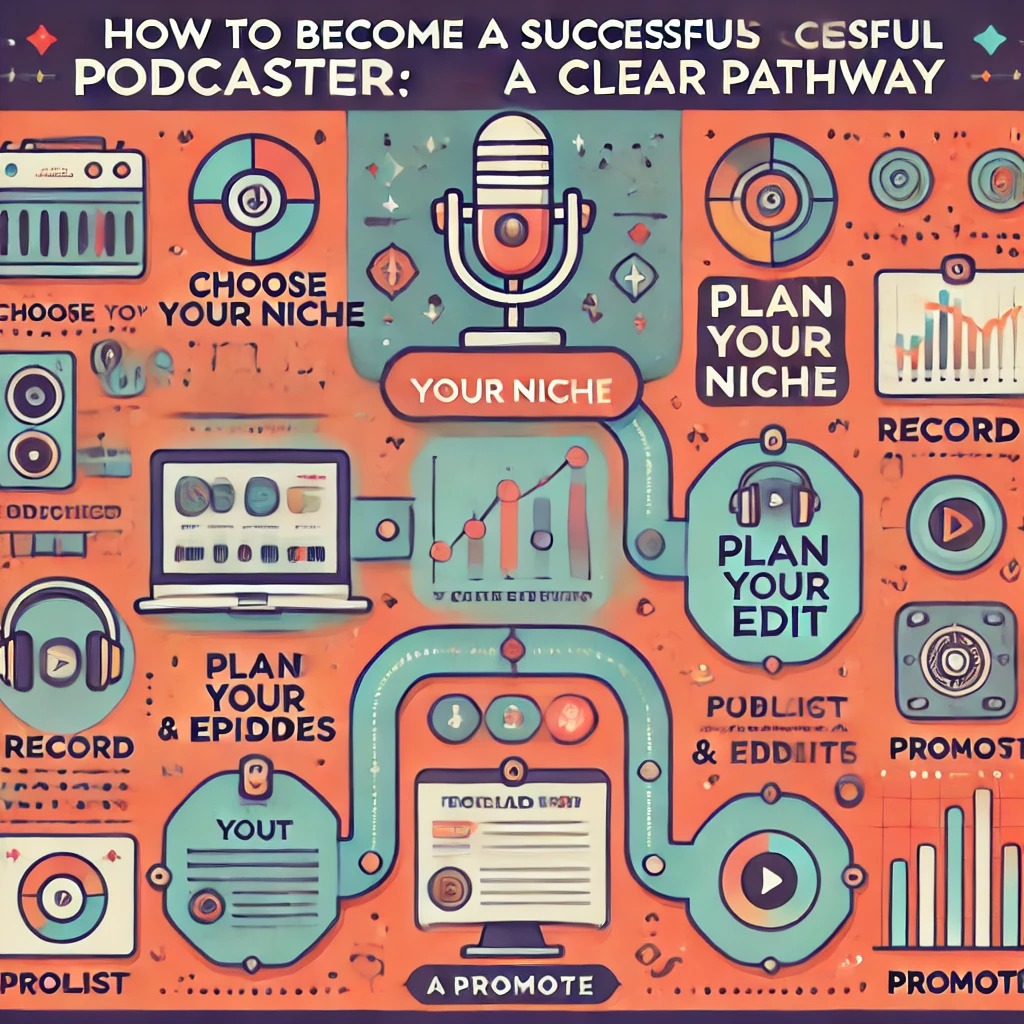Hosting Live Episodes: Day 27

Categories:
4 minute read
Live podcasting has emerged as a dynamic method for engaging audiences in real-time, creating an interactive experience that traditional pre-recorded episodes cannot replicate. As we delve into the world of live podcasting, we’ll explore various platforms available, the necessary equipment, and how to effectively plan and execute a live episode.
Why Choose Live Podcasting?
Live podcasting offers several benefits that can enhance your content and audience engagement:
Real-Time Interaction: Unlike traditional podcasts, live episodes allow listeners to interact through comments and questions, fostering a sense of community and immediacy.
Event-Like Experience: Broadcasting live creates an atmosphere akin to attending an event, encouraging listeners to tune in at the scheduled time.
Guest Participation: Inviting guests to join live can bring diverse perspectives and expertise, enriching the content for your audience. Choosing the Right Platform
Selecting the right platform for your live podcast is crucial. Here are some popular options:
| Platform | Key Features | Best For |
|---|---|---|
| Restream | Multistreaming capabilities, customizable branding, cloud storage | Professional-looking live podcasts |
| Streamyard | User-friendly interface, on-screen participants, easy branding | Simple setup for beginners |
| Podbean Live | Mobile app access, interactive features like call-ins and live chat | Quick mobile setups |
| Twitch | Focused on live content with a built-in audience for talk shows | Engaging younger audiences |
| YouTube Live | Large audience base, easy access without requiring sign-in | Broad visibility and engagement |
Each platform has its unique strengths; your choice should align with your content style and target audience.
Essential Equipment for Live Podcasting
To ensure a professional quality broadcast, consider investing in the following equipment:
Microphone: A good quality microphone is essential for clear audio. USB microphones like the Blue Yeti or XLR options like the Shure SM7B are popular choices.
Camera: If you’re incorporating video, a webcam or DSLR camera can enhance visual quality. The Logitech C920 is a reliable webcam option.
Headphones: Use closed-back headphones to monitor audio without feedback.
Streaming Software: Software like Restream Studio or Streamyard allows you to manage your stream effectively, adding graphics and managing guest appearances.
Planning Your Live Episode
A well-structured plan is vital for a successful live episode. Here’s how to outline your format:
Choose Your Topic: Select a topic that resonates with your audience. Consider current trends or frequently asked questions in your niche.
Set a Schedule: Decide on a date and time that works best for your target audience. Consistency helps build anticipation.
Create an Outline:
Introduction: Briefly introduce yourself and the topic.
Main Content: Break down the topic into segments. This could include:* Discussion points
Guest interviews
Audience Q&A
Conclusion: Summarize key takeaways and provide information on upcoming episodes.
Promote Your Episode: Use social media platforms to announce your live episode. Create engaging posts that highlight what listeners can expect.
Engage During the Episode:
Encourage audience participation through comments and questions.
Consider using polls or quizzes to make the experience interactive.
Best Practices for Going Live
To ensure a smooth broadcast, follow these best practices:
Test Your Equipment: Conduct a test run to troubleshoot any technical issues before going live.
Stay Hydrated: Keep water nearby to stay refreshed during your session.
Be Authentic: Engage with your audience genuinely; authenticity builds trust and rapport.
Manage Time Wisely: Stick to your planned schedule but remain flexible to accommodate audience interactions.
Monetizing Your Live Podcast
Live podcasting also opens avenues for monetization:
Sponsorships: Partner with brands relevant to your audience for sponsored segments during your live shows.
Listener Donations: Platforms like Podbean allow listeners to donate during live streams through virtual gifts or super chats.
Merchandise Sales: Promote merchandise related to your podcast during live episodes.
Conclusion
Hosting live episodes can significantly enhance your podcasting journey by fostering deeper connections with your audience while providing an engaging platform for discussion. By choosing the right tools, planning effectively, and maintaining an interactive environment, you can create memorable experiences that resonate with listeners long after the broadcast ends.
As you embark on this exciting venture of live podcasting, remember that practice makes perfect. Each episode will provide valuable insights into what works best for you and your audience. Embrace this opportunity to innovate and connect in real-time!
Citations: [1] https://restream.io/blog/live-podcasting/ [2] https://www.christophtrappe.com/what-are-my-options-for-the-best-live-podcast-platform/ [3] https://www.podbean.com/how-to-start-a-live-podcast [4] https://lowerstreet.co/blog/best-podcast-hosting-platforms [5] https://www.onthefly.stream/blog/benefits-of-live-podcasting/ [6] https://wearesoundmedia.com/live-podcasting-everything-you-need-to-know/ [7] https://riverside.fm/tools/live-podcast [8] https://riverside.fm/blog/live-podcasting
Feedback
Was this page helpful?
Glad to hear it! Please tell us how we can improve.
Sorry to hear that. Please tell us how we can improve.